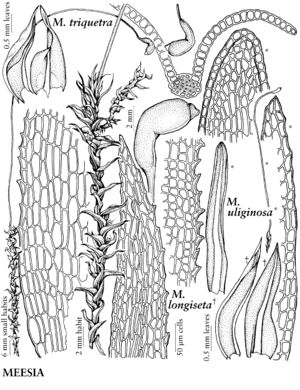Difference between revisions of "Meesia longiseta"
Sp. Musc. Frond., 173. 1801.
FNA>Volume Importer |
imported>Volume Importer |
||
| (3 intermediate revisions by 2 users not shown) | |||
| Line 9: | Line 9: | ||
|special_status={{Treatment/ID/Special_status | |special_status={{Treatment/ID/Special_status | ||
|code=F | |code=F | ||
| − | |label= | + | |label=Illustrated |
}} | }} | ||
|basionyms= | |basionyms= | ||
| Line 35: | Line 35: | ||
-->{{#Taxon: | -->{{#Taxon: | ||
name=Meesia longiseta | name=Meesia longiseta | ||
| − | |||
|authority=Hedwig | |authority=Hedwig | ||
|rank=species | |rank=species | ||
| Line 48: | Line 47: | ||
|publication title=Sp. Musc. Frond., | |publication title=Sp. Musc. Frond., | ||
|publication year=1801 | |publication year=1801 | ||
| − | |special status= | + | |special status=Illustrated |
| − | |source xml=https:// | + | |source xml=https://bitbucket.org/aafc-mbb/fna-data-curation/src/2e0870ddd59836b60bcf96646a41e87ea5a5943a/coarse_grained_fna_xml/V28/V28_33.xml |
|genus=Meesia | |genus=Meesia | ||
|species=Meesia longiseta | |species=Meesia longiseta | ||
Latest revision as of 21:35, 5 November 2020
Plants 0.4–0.8 cm. Stem leaves spreading and somewhat twisted when dry, irregularly spreading and indistinctly 3-ranked when moist, ovate-lanceolate to lanceolate, 2–3.5 mm; base decurrent; margins plane to weakly reflexed basally, entire; apex acute to narrowly obtuse; costa narrow, ending in or just before apex; inner laminal cells smaller, walls thicker than those of marginal cells. Sexual condition synoicous. Seta 5–11 cm. Capsule 3.5–4.5 mm. Spores 36–44 µm.
Habitat: Calcareous soil banks, rich fens, boreal, alpine, and arctic habitats
Elevation: low to high elevations
Distribution

Alta., B.C., Man., Nfld. and Labr., N.W.T., Nunavut, Ont., Yukon, Alaska, Calif., Conn., Idaho, Ind., N.H., N.Y., Central America (Guatemala, Honduras), n Eurasia.
Discussion
Meesia longiseta is distinguished from M. triquetra by its entire leaf margins, synoicous sexual condition, and generally more slender leaves. The species occurs in habitats similar to those of M. triquetra.
Selected References
None.
